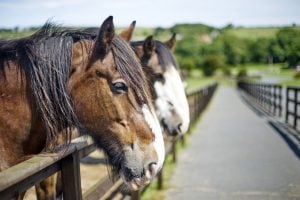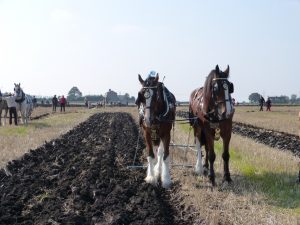When dressage and showing classes for ridden heavy horses were introduced, social media was awash with disparaging comments. One of the kindest labelled them as “gimmicks” – and one of the cruellest referred to “elephants in tutus”.
Critics have egg on their faces, as the classes are hugely popular and standards are high. But heavies, along with breeds ranging from the Cleveland Bay to some of our most prized native pony breeds, are on a rollercoaster path to survival - so the more riders realise the huge talent they offer, the better.
This year, the Rare Breeds Survival Trust predicted that our iconic heavy horse breeds could die out within ten years. The Suffolk Punch is on its critical list, with fewer than 300 registered breeding females in the UK, whilst Clydesdales are vulnerable (500-900) and Shires are at risk (900-1500). That’s bad enough, but how many people realise that the Cleveland Bay, Dales pony, Eriskay pony and Hackney horse and pony are also on that critical list?
Or that the Dartmoor and Exmoor breeds are endangered, and Fells and Highlands are vulnerable? Even the New Forest pony is at risk. If you drive through the New Forest, you might not believe that, especially when you have to wait whilst ponies amble across the road.
These animals aren’t just part of our heritage. In some cases, they shape it. Last year, naturalist Chris Packham claimed that ponies were destroying the biodiversity of the New Forest and criticised the system which allows those with commoner status to graze ponies there. Natural England’s Jenny Thomas said she was more worried about the loss of commoning, rather than too many ponies being grazed. She said the New Forest was “the last remaining stronghold” of several plant species that would otherwise be lost, and which only grow where there is heavy trampling from grazing animals.
That’s also why Exmoor ponies are used for conservation grazing. It’s easy to say that more people ought to breed these animals to preserve our heritage, but they need to be bred for a purpose and to be fit for that purpose. We’ll never return to the days
When horses worked the land as a matter of course - though if you get the chance to see skilled practitioners in a ploughing match, don’t miss it - but we should be aware of their value for riding and driving.
That may mean that breeds must evolve, without losing vital traits. When I started reporting on showing classes for Horse and Hound in the 1980s, Exmoor ponies were inevitably straight in the shoulder and when you sat on one, it was as if its ears were in your mouth. Similarly, many New Forest ponies had straight shoulders and big heads that were out of proportion to their frames and you’d have been laughed out of the ring for suggesting that a Highland pony could canter.
Today, the best examples of these ponies epitomise quality, versatility and breed type. As long as we stick to those aims, and there are breeders dedicated and passionate enough to preserve them, we can hopefully keep them safe.
Don’t forget the value of partbreds, either. There is an argument that purebred mares should only be covered by purebred stallions, which I’ll leave to more knowledgeable people to debate. But why not cross a heavy horse stallion with, say, a Thoroughbred or warmblood mare? We can’t all breed or buy animals to preserve bloodlines, nor should we breed field ornaments. But we can be open-minded and we should all heed the RBST’s call to support the National Livestock Gene Bank. If we don’t collect genetic material from these breeds now, we’ll lose them forever. And then it might not be “Dead as a dodo” but “Dead as a Suffolk Punch”.



